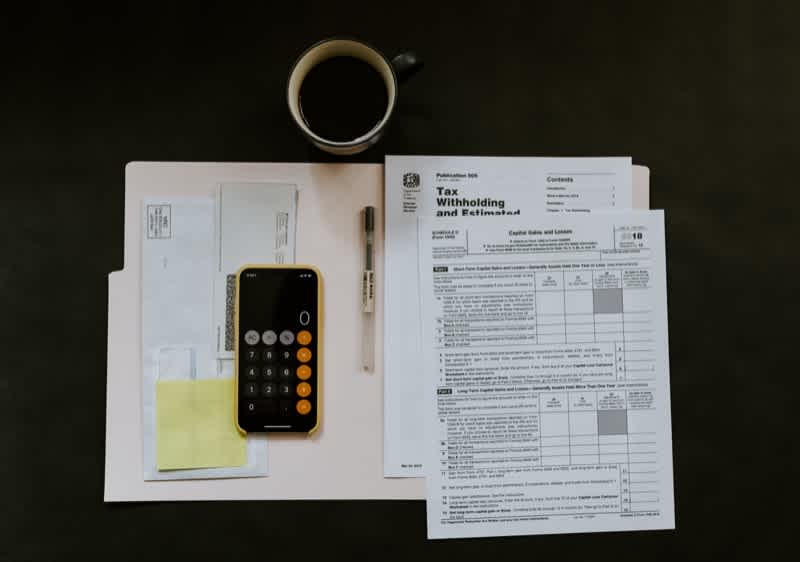Social Security
The Old-Age, Survivors, and Disability Insurance (OASDI) program, also known as Social Security, is the government’s benefits program for seniors, surviving spouses and dependents, and the disabled.

Michael Schultheiss
•
Published August 29th, 2020
•
Updated March 31st, 2024
Table of Contents
Key Takeaways
The Old-Age, Survivors, and Disability Insurance (OASDI) program was created with the Social Security Act of 1935 and is also known as Social Security.
Both employees and employers pay into OASDI/Social Security.
Your Social Security credits are an important determinant of your future benefits.
The Old-Age, Survivors, and Disability Insurance (OASDI) program, also known as Social Security, is the government’s benefits program for seniors, surviving spouses and dependents, and the disabled. It is designed to replace income lost in retirement, or because of the death of a spouse or parent, or because of disability.
Wherever you are in your retirement planning process, it is a good idea to consider OASDI. Most Americans will likely end up needing OASDI benefits as an important source of supplemental income in retirement.
If you want to get a clear picture of your own finances and your options with regard to OASDI/Social Security benefits, talk to a Certified Retirement Planner®. It’s an excellent way to clarify your retirement options and the amount of OASDI benefits you may qualify for.
(OASDI) Program History
The Old-Age, Survivors, and Disability Insurance (OASDI) program is the official name for Social Security. The reason OASDI/Social Security exists is to provide a partial replacement for income that people are no longer able to get because of old age, death of a spouse or qualifying ex-spouse, or because of disability.
The program was originally created with the Social Security Act, which was signed into law by then-President Franklin D. Roosevelt on August 14, 1935. At the time, the U.S. economy was suffering from the Great Depression.
The government began collecting taxes to fund the program in 1937.
Originally, the program applied only to seniors, since the original idea was to replace income lost in retirement. However, dependents were added by an amendment in 1939. Survivors benefits – the S in OASDI – are made either to surviving spouses or to the eligible children of deceased workers.
Later, disabled people were covered by another amendment, this one in 1956. Disability payments are made to eligible persons who are no longer able to hold gainful employment and who meet other criteria.
Questions about Social Security? We're here to help.
Schedule your FREE Retirable consultation today.Today, the U.S. Social Security or OASDI program is the largest such system in the world. It also accounts for the greatest expenditure in the federal budget, projected to reach $1.17 trillion in 2020.
Almost 9 out of 10 individuals age 65 and older receive Social Security benefits, according to the Social Security Administration (SSA). This is a good indicator of how important the program is for most Americans’ retirement planning.
Employees and Employers Pay Into OASDI
Under the Federal Insurance Contribution Act (FICA), Social Security benefits are financed through OASDI tax. Employers must deduct 6.2% of each employee’s wages as their OASDI/EE contribution, and employees must pay the matching 6.2% amount. This is the meaning of “OASDI” on each paystub.
Those who are self-employed pay the whole tax, 12.4%. There is a ceiling on the amount of income subject to the Social Security tax or OASDI tax. In 2020, the OASDI tax limit was $137,700, while in 2021 it has increased to $142,800.
The OASDI taxes are funneled into two different trust funds. The first is the Old-Age and Survivors Insurance (ASI) Trust Fund, which covers retirement benefits. The second is the Disability Insurance (DI) Trust Fund, which covers disability benefits.
People who collect OASDI benefits must meet certain criteria. For old-age benefits – OASDI retirement benefits – a worker must be at least 62 years of age and must have accumulated 40 credits.
However, taking retirement benefits at age 62 or at any point before full retirement age will result in reduced benefits. Wait until full retirement age, and you will get more benefits – but if you wait longer, up until the age of 70, you can get even more benefits. In all, you can receive up to a 32% higher annual payout if you take OASDI benefits at age 70 instead of age 62.
What are Social Security Credits?
In order to qualify for the old-age portion of OASDI, the retirement benefits that are by far the main component of OASDI/Social Security, a worker must accumulate sufficient credits, 40 in all.
Fo1r 202, workers earn one credit for every $1,470 of income, up to a maximum of 4 credits in a year. The dollar amount is changed periodically: it is indexed for inflation periodically.
If you work and accumulate some credits but then stop working, your credits will remain on your record. If you later return to work, you can pick up where you left off, adding additional credits until you are able to qualify.
Final Thoughts
It is a good idea to consider the significance of OASDI benefits to your retirement plans. For younger workers, paying into OASDI may seem like a terrible burden: after all, they have plenty of time until retirement, and they may well be paying into an Individual Retirement Account (IRA) or a 401(k).
The trouble is, a lot of Americans are not saving enough for retirement to be able to afford the luxury of not having to worry about Social Security OASDI benefits. Only about one-fifth of Americans have over $200,000 saved for retirement, and over a fifth have less than $5,000.
On the other hand, it is possible to rely too much on Social Security/OASDI benefits. Most retirees will need to have additional savings or sources of income in retirement, even if they wait to take Social Security benefits until after full retirement age.
Wherever you are in your retirement planning, talking to a Certified Financial Planner® can help you to get the best and clearest picture of your finances. Talk to a Certified Financial Planner® to get a sense of what your options are and when you might want to start taking OASDI benefits.
Frequently Asked Questions
What is the OASDI program?
The Old-Age, Survivors, and Disability Insurance (OASDI) program, often referred to as Social Security in the United States, is a comprehensive federal benefits program that provides financial assistance to eligible retirees, disabled individuals, and the families of deceased workers.
Who is eligible for OASDI benefits?
Eligibility for OASDI benefits varies by the specific type of benefit:
- Old-Age: Workers who have paid into the system through payroll taxes and have reached the retirement age (which varies from 62 to 67, depending on the birth year).
- Survivors: Families of deceased workers, including widows, widowers, and dependent children.
- Disability: Workers who can no longer work due to a significant disability and have paid into the system for a required number of years.
How are OASDI benefits funded?
OASDI benefits are funded through payroll taxes collected under the Federal Insurance Contributions Act (FICA). Both employees and employers contribute to the fund, with self-employed individuals paying both portions.
How do I apply for OASDI benefits?
Applications for OASDI benefits can be submitted online through the Social Security Administration's website, over the phone, or in person at a Social Security office. It's advisable to apply three months before you want your benefits to start.
What happens to my OASDI benefits when I die?
Upon your death, your eligible survivors, such as a spouse, children, or dependent parents, may receive survivor benefits based on your earnings record. It's important to keep your family's information up to date with the Social Security Administration to facilitate this process.
Share this advice

Michael Schultheiss is a freelance copywriter of long-form content and other marketing communications (B2B and B2C) in the financial services and FinTech niches. In copywriting, he looks for hungry crowds. Other interests include health, fitness, and reading and writing fiction.
Introduction
Benefits
Taxes
Considerations
Social Security in 2022
Local
Spouse
Applying for Social Security
Share this advice

Michael Schultheiss is a freelance copywriter of long-form content and other marketing communications (B2B and B2C) in the financial services and FinTech niches. In copywriting, he looks for hungry crowds. Other interests include health, fitness, and reading and writing fiction.



